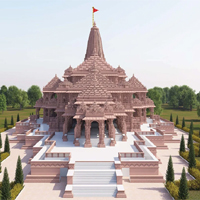History in Making: The Grand Inauguration of Ram Mandir
Dr. Mohini Shinde
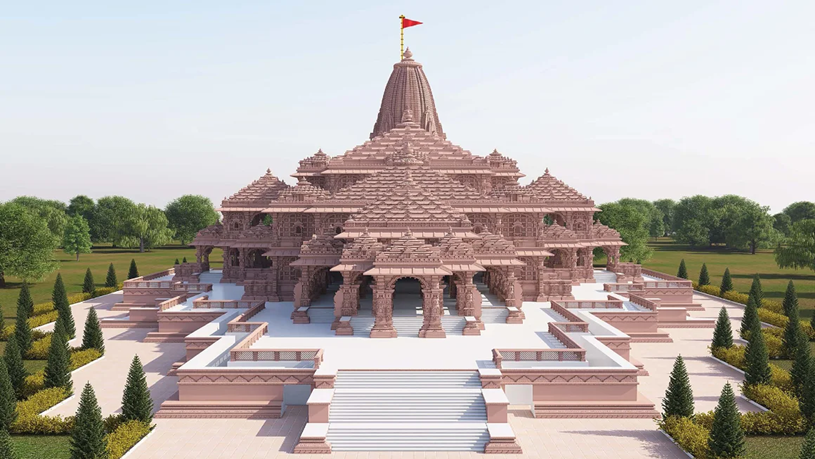
| Main Temple |
|---|
|
On January 22, 2024, the city of Ayodhya in India will witness a historic event that has been long-awaited by millions of Hindus all over the world. It is the grand opening of the Ram Mandir, a temple dedicated to Lord Ram, the revered deity of Hinduism. Prime Minister Narendra Modi is scheduled to open the Ram Temple for devotees in a grand inauguration ceremony.
This momentous occasion holds great significance not only for devotees but also for the country as a whole. Let me give you a glimpse into the future and learn about the history, facts, and excitement surrounding the upcoming inauguration of the Ram Mandir in Ayodhya in January 2024.
The Historical Importance of Ayodhya and Ram Mandir
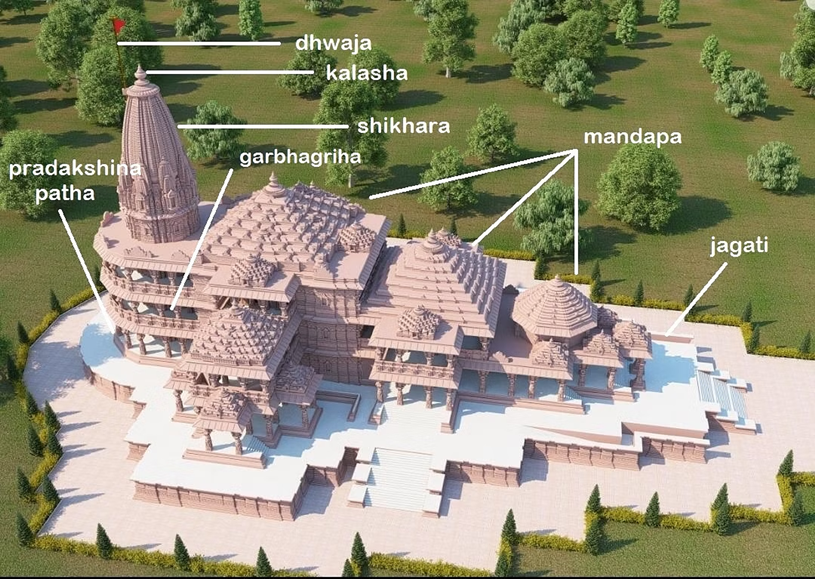
Ayodhya, a city in the northern state of Uttar Pradesh, India, holds immense historical and cultural significance in the hearts of millions of people. Known as the birthplace of Lord Ram, it has been a focal point of devotion for Hindus for centuries. The construction of the Ram Mandir, a temple dedicated to Lord Ram, has been a long-awaited dream for devotees.
The historical importance of Ayodhya lies in its connection to the epic Ramayana, which tells the story of Lord Ram’s life and his journey to defeat the demon king, Ravana. According to an ancient Hindu scripture, Lord Ram was born in Ayodhya, making it one of the most sacred places for Hindus around the world.
The dispute over the land where the Ram Mandir stands today has been a topic of contention for decades. According to the ASI (Archaeological Survey of India), the Babri Masjid, a mosque, was built by the barbaric Mugual king on top of the Hindu Temple. The group of archaeologists that conducted the initial excavation at the Babri Masjid in 1976–1977 included KK Muhammad, a former regional director of the North Archaeological Survey of India (ASI). He said in one of the interviews that there is enough evidence from archaeology to suggest there was a large temple located beneath the Babri Mosque. According to him, Muslims ought to freely cede the land at Ayodhya.
Unfortunately, no decision was made until 2019. In 2019, after years of legal battles, the Supreme Court of India finally ruled in favor of constructing the Ram Mandir at the disputed site.
The construction of the Ram Mandir is not just a religious project but also a symbol of unity and harmony. It signifies the coming together of people from different walks of life to celebrate a shared heritage and belief. The temple will serve as a spiritual center, attracting pilgrims and tourists from all over the world.
As we look ahead to the grand opening of the Ram Mandir in January 2024, it is important to remember the historical importance of Ayodhya and the significance of this moment for devotees. The completion of the temple is not only a testament to the devotion of millions but also a step towards preserving and celebrating India’s rich cultural heritage.
The Architectural Grandeur of the Ram Mandir
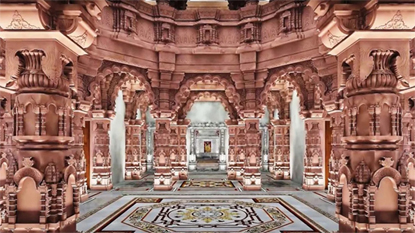 The Ram Mandir in Ayodhya is not just a temple, but a symbol of architectural grandeur that will awe and inspire visitors from around the world. The magnificent structure is designed to showcase the rich heritage and cultural significance of Lord Ram.
The Ram Mandir in Ayodhya is not just a temple, but a symbol of architectural grandeur that will awe and inspire visitors from around the world. The magnificent structure is designed to showcase the rich heritage and cultural significance of Lord Ram.
The temple’s architectural style is deeply rooted in the traditional Nagara style of Hindu temple architecture. Its towering shikharas, intricately carved pillars, and stunning sculptures depict scenes from the Ramayana, bringing the epic story to life. The temple complex will span over an expansive area, allowing ample space for devotees to offer their prayers and participate in religious rituals.
Unveiling the Facts About the Ram Mandir
The Ram Mandir is a highly significant Hindu temple and a site steeped in both historical and religious importance. Its journey to realization has been long and complex, marked by legal battles, social discourse, and ultimately, a sense of hope and unity for many Hindus.
Here’s a closer look at some key facts about the Ram Mandir:
Temple’s dimensions and seating
The temple space is 54,700 square feet, or around 2.7 acres of land. With a total area of around 70 acres, the Ram Mandir Complex would have enough space to accommodate one million worshippers at a time.
Stone of Bansi Paharpur Sands
The rare pink marble stone known for its strength and beauty, Rajasthan Bansi Paharpur stone, will be cut to form the superstructure of the Ram Mandir. Four lakh square feet of stone would be needed in total.
The pink and red Bansi Paharpur Sandstone can be found in the Bayana Tehsil of the Bharatpur District in Rajasthan. In 2021, the center reversed the mining prohibition imposed in 2016 and granted, in principle, authority to turn 398 hectares of protected forest land into revenue land for the purpose of mining pink sandstone in the Band Baretha Wildlife Sanctuary in Bharatpur.
More details about Mandir
The Ram Mandir’s measurements are 161 feet high, 235 feet broad, and 360 feet long. The temple will be three times as tall as the tallest extant building in the ancient city.
Floors: The mandir will have one 161-foot-tall tower and five domes. The three-story temple’s centerpiece, Garbh Griha, is designed to let sunlight shine on the idol of Ram Lalla, the Lord’s newborn incarnation. The Keertan Mandap, Nritya Mandap, Rang Mandap, and the two Prarthana Mandaps on either side would be open spaces, but the Griha Mandap, like the sanctorum, would be completely covered.
The idol: There are going to be two Lord Ram idols. One will be the idol, which has been in the tent for decades since being discovered in 1949. The project manager for the construction of the Ram Mandir, Jagdish Afle, says the other would be a massive statue that can be seen from a great distance.
The bell of the temple: A 2,100-kg bell for the Ram Temple was transported from Etah, one of India’s most prominent bell-making locations. The cost of the 5-foot-wide and 6-foot-tall bell is Rs 21 lakh.
The temple is being constructed by Larsen & Toubro, one of the top-rated Indian engineering companies, on a 2.67-acre plot inside a 70-acre complex. 40 million resident Indians have donated towards the project, which has an estimated cost of $181 million. In the initial months, an estimated 100,000 devotees are anticipated to visit the shrine every day.
Sacred Soil in 2587 Areas
The foundation design of the Ayodhya Ram temple, which was created with sacred soil from 2587 places, is among its most intriguing features. Its foundation is derived, for example, from locations such as Jhansi, Bithoori, Yamunotri, Haldighati, Chittorgarh, Shivaji’s Fort, the Golden Temple, and numerous other sacred sites.
The biggest temple in India
Based on its architectural plan, Ram Mandir is expected to be the biggest temple in all of India. The Sompura family, who designed the temple, also said that Ashish Sompura, Chandrakant’s son, created the design thirty years ago. The family said that the temple is 28,000 square feet in size and rises to a height of about 161 feet.
Temporal Relic Beneath the Temple
Authorities plan to bury a time capsule beneath the Ayodhya Ram Mandir Temple, about 2000 feet below the surface. The time capsule’s exclusive goal is to preserve the temple’s identity so that it won’t be forgotten in the future. The capsule will contain pertinent information about Lord Ram, Ram Mandir, and Ayodhya, the place of his birth, written on a copper plate.
Holy water from 150 holy rivers throughout India
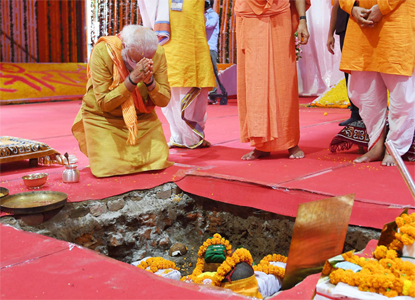 A unique holy water with a foundation layout, consisting of holy water from 150 holy rivers throughout India, was used in the sacred rite on August 5. Shabd Vaigyanik Mahakavi Triphala and Radhey Shyam Pandey, two brothers, are the source of this mix of river waters. This holy water is a concoction of eight rivers, three seas, and Sri Lankan soils. There was also Mansarovar water added to the mixture. The holy water mixture also included river water from Myntang and Myntdu, as well as water from a 600-year-old Durga Temple in the West Jaintia Hills.
A unique holy water with a foundation layout, consisting of holy water from 150 holy rivers throughout India, was used in the sacred rite on August 5. Shabd Vaigyanik Mahakavi Triphala and Radhey Shyam Pandey, two brothers, are the source of this mix of river waters. This holy water is a concoction of eight rivers, three seas, and Sri Lankan soils. There was also Mansarovar water added to the mixture. The holy water mixture also included river water from Myntang and Myntdu, as well as water from a 600-year-old Durga Temple in the West Jaintia Hills.
Iron and steel are not used in construction.
It has been reported that Ram Mandir will be built entirely of stones. The temple will not be constructed out of steel or iron. Even the construction project supervisor, Anu Bhai Sompura, stated that other materials like copper, white cement, and wood will be utilized in place of iron.
Magnificent Elements in Temple Architecture
The design structure will show Lord Ram’s Darbaar on the first floor. The use of pink sandstone from Rajasthan’s Bharatpur, known as Bansi Paharpur, in the temple’s construction is one of its most distinctive aspects. Furthermore, 360 pillars will be constructed in the Nagar style.
Ten acres will be used for temple construction out of the 57 acres that will make up the temple complex. The Ram Mandir would be surrounded by four small temples that would make up the remaining lands.
Bricks Used in Building
Another interesting fact is that special bricks with the inscription “Shri Ram” will be used to construct the temple. Throughout the course of thirty years, some of these bricks have not been used; that is why they have been named Ram Shilas. Meanwhile, a brick owner at UP has donated a unique batch of bricks. The bricks in the batch follow a specific recipe from Domath Soil and are engraved with Lord Ram’s name. 51,000 of these 3 kg bricks will be donated to the construction of the Ayodhya Ram mandir.
Extra Cash for Temple Town Renovation
In Ayodhya, Ram Mandir leaves a lasting impression. A location that, for those who were unaware of it previously, will now leave a lasting impression. There are rumors that the entire town will undergo renovations. PM Modi is prepared to unveil development projects valued at 500 crores, starting with new developments and other initiatives.
The Countdown to the Grand Opening on January 22, 2024
As we eagerly await the grand opening of the Ram Mandir on January 22, 2024, the excitement in Ayodhya is palpable. The countdown has begun, and people from all corners of India and around the world are preparing to witness this historic event. The anticipation is building as devotees eagerly await the moment when the doors of the temple will finally open and they can offer their prayers to Lord Ram.
In Ayodhya, the city is bustling with preparations. The final touches are being made to the temple complex, ensuring that every detail is perfect for the grand unveiling. Skilled artisans are meticulously carving intricate designs and sculptures, creating a visual feast for the eyes. The entire atmosphere is charged with excitement and anticipation, as everyone is eager to experience the spiritual energy that will permeate the air.
The upcoming grand opening of the Ram Mandir is not just a religious event but a cultural extravaganza. Festivities and celebrations will be held throughout the city, showcasing the rich heritage of Ayodhya and the devotion of its people. The streets will be adorned with lights, decorations, and colorful displays, creating a vibrant and festive ambiance.
As the clock ticks closer to January 22, 2024, the enthusiasm is only growing stronger. People are eagerly marking their calendars and making travel arrangements to be a part of this historic moment. The grand opening of the Ram Mandir will be a once-in-a-lifetime experience, an opportunity to witness history being made.
Very shortly, Ayodhya will be the epicenter of spiritual fervor, attracting devotees, tourists, and the curious alike. It will be a time of joy, celebration, and unity as people from all walks of life come together to honor Lord Ram and celebrate India’s rich cultural heritage. The countdown to the grand opening of the Ram Mandir is on, and the world is waiting with bated breath for this momentous occasion.
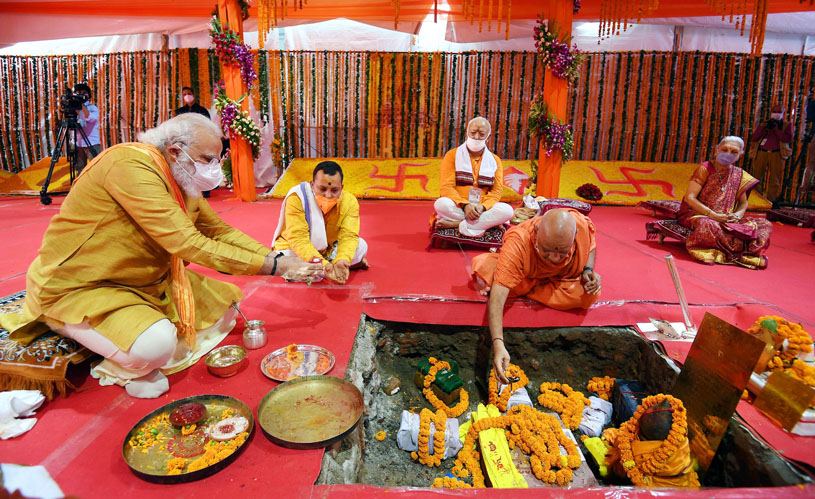
The Future Impact of the Ram Mandir in Ayodhya
The opening of the Ram Mandir in Ayodhya on January 22, 2024 will undoubtedly have a significant impact on the city and its people. This grand temple, dedicated to Lord Ram, will not only be a place of worship but also a catalyst for economic and cultural growth in the region.
Firstly, the Ram Mandir is expected to attract a large number of tourists and pilgrims from around the world. This influx of visitors will lead to a boost in the local economy as hotels, restaurants, and other businesses cater to the needs of the growing tourist population. Additionally, the increased footfall is likely to create job opportunities for the local population, further contributing to the economic development of Ayodhya.
Furthermore, the Ram Mandir will put Ayodhya on the map as a major cultural and religious destination. As more people visit the city, Ayodhya’s rich cultural heritage will be showcased to the world. This exposure will not only bring international recognition but also foster a sense of pride and identity among the locals.
Moreover, the Ram Mandir has the potential to strengthen the social fabric of Ayodhya. The construction of the temple has already brought people from different communities and backgrounds together, emphasizing the importance of unity and harmony. This spirit of inclusivity is expected to continue as the temple becomes a place of congregation, encouraging people from all walks of life to come together and celebrate their shared heritage.
The opening of the Ram Mandir in Ayodhya in January 2024 will have a transformative impact on the city. It will boost the local economy, promote Ayodhya as a cultural destination, and foster unity among its residents. This historic event is not just a religious milestone but also a catalyst for growth and development in Ayodhya.

